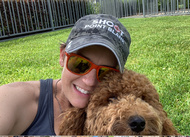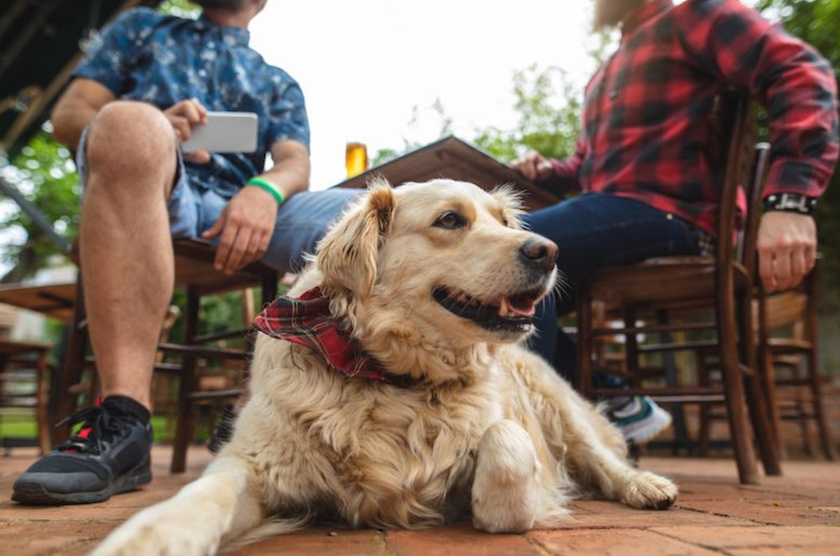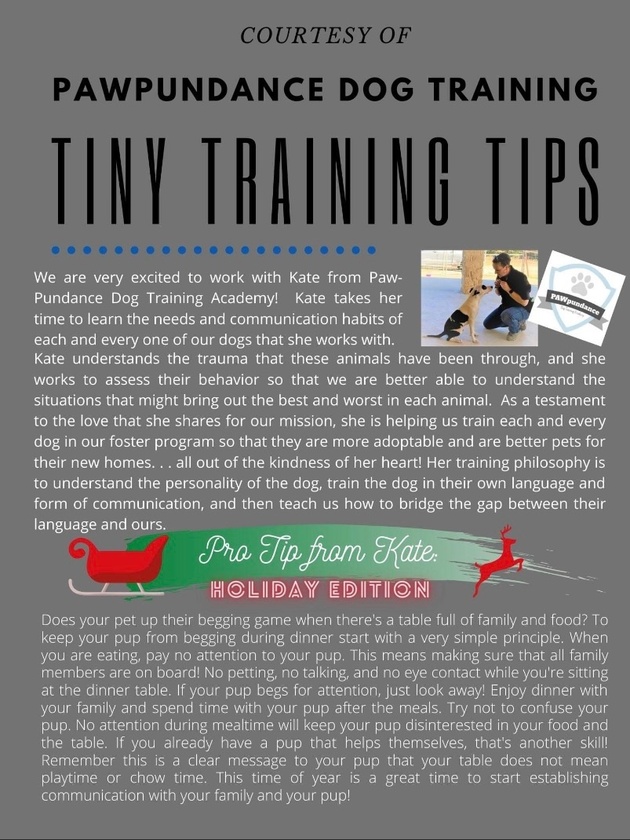
It’s ok! We’re here to help. We speak a little dog and can help translate for both of you. It’s probably just a miscommunication! And we are here to help get you both speaking the same language! Woof!
Connect with the PAWpundance training team and other members of the dog community to discuss better ways to communicate with your furry house guest.
**To get started USE code: TRIAL1month **
This is a great example of the power of "take it"!! Buckee has never done an agility course before. But all my dogs know to follow my finger.
We always learn "leave it" as a clear body block... another video for another time. - But this lovely demonstration by Mr. Buckee shows the importance of "take it".
So Mr. B was driving his mama crazy by demand licking her while she was working on her computer on the couch. So we gave her a few cues to help her tell Buckee that there is a time and place for all these snuggles. So we went to work first with "take it."
Buck has a good stay so we lined up a few treats on the ground then pointed from this nose to the treat and said "take it". The key in this is pointing clearly from his nose to the treats.
One thing we need to learn when we begin "talking with our hands" is how to be quiet too. Remember that if we over use the words we want to use as a cue they will lose their meaning for our pups. They can even take on a whole other meaning (poisoning the cue - see in the case of recall) when we continue to follow the cue with another action that is not favorable. So when we are giving gestures to our pups, let's think about the gal doing sign language for a notable speaker. If that person, between important signs that they translate, is also flapping their hair and fidgety - might the hearing impaired get confused or just frustrated. Notice how disciplined these translators are with their body movements when they sign. When we train we need to strive to be quiet with the rest of our movements.
With that said, try not to wave your finger around and talk to your spouse - pointing out where they left this or that. Try to keep your attention and hands quiet and on your pup.
Keep the stay. Line of the treats. Point from the nose to the treat you would like your pup to take. Start out easy in the beginning. Just one treat to begin with then two then three. Then begin to mix up the order as they get better. But always make sure the puppy take the the treat you are drawing a line toward. And to be clear. you are drawing a line from the pups nose to the treat and they are to follow this line.
Once the skill is understood, your pup, like Buckee will follow your finger. So for Buckee, we took it a step farther and worked directly with couch manners. We had him learning to follow our finger and to jump "off" the couch when his mama requested. To get on the couch, he had to sit and make a request. And once on the couch the behavior that received attention was a polite down next to her - not standing on her pawing at her hand.
When we all got a fun day at the park, Buckee got to ride along. He knew from this skill to follow my finger and was able to do the agility course without ever doing ANYTHING like this before.
WOW!! Great Job Buckee!! See how a small skill can translate into a very fun ability!!
Keep up the good work buddy!!
Welcome to PAWpundance Dog Training Academy on Locals.com!
We’re thrilled that you’ve joined our community! PAWpundance is a place for positive, dog-loving people to come together, share experiences, and help each other grow. Locals offers an “ad-free experience,” so even a small contribution helps support our tech and keeps our community thriving.
We want to see your furbabies!
We’re here to assist with any questions you may have about training, behavior, and more. At PAWpundance, we believe in blending knowledge with a bit of fun—expect plenty of paws, puns, and maybe even a dance or two! Together, let’s enjoy some laughs and build stronger relationships with our pups.
Our Philosophy:
We’ve invited another species to live in our homes, and our dogs are much more than accessories; they’re our guests. They don’t speak our language, and like in the movie E.T., we don’t want to be the intimidating figures trying to coerce a scared, confused being. Instead, we want to be like ...
Eye Contact, Eye Contact, Eye Contact!
Reward every glance. Start by reinforcing brief glances, then encourage your pup to hold your gaze a bit longer. Gradually phase out your part of the eye contact—your pup will learn to watch you and adapt to your movements naturally. This approach helps them learn to walk with you without relying on leash cues.
Remember, the leash is purely for safety—not for communication.
Take a look at this video with Meghan and Buckee. Buckee is watching Meghan closely, and she rewards him by making eye contact, smiling, and offering treats. Meghan also looks forward occasionally, teaching Buckee to walk with her in sync.
Notice that Buckee is a reactive pup, so the leash is essential for safety, especially if he responds to something unexpectedly. However, it’s only used for physical control when necessary. When Buckee refocuses, Meghan reestablishes instructional control, and they continue their walk together. She does a fantastic job of engaging with him! In ...
Loose-Leash Walking Tip:
Where you reward makes a big difference! Try using the hand on the same side as your dog when giving treats or praise.
When you reach across your body to reward with the opposite hand, it draws your dog’s nose in front of you, encouraging them to move ahead and potentially start pulling.
In the video of Meghan and Domino, Meghan holds the leash with her left hand while Domino walks on her right. She rewards him by petting and giving treats with her right hand. This keeps Domino walking by her side on a loose leash, rather than in front, pulling her along.
Next time you’re out walking with your pup, try rewarding with the hand on the same side as your dog.
https://twitter.com/wholedogjournal/status/1295508215740932098?s=21
How to teach you pup to be a good dining companion! What a great skill!

https://twitter.com/wholedogjournal/status/1292609106637987840?s=21
This is about counter-surfers, but I love the description of trying to shame dogs. This author, Pat Miller helped me understand this concept in her book the Power of Positive Dog Training.
If you’re still on Twitter, the Whole Dog Journal is a great group to follow. Lots of fantastic info!













